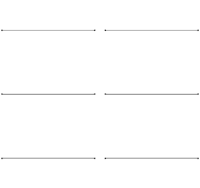
Photo from wikipedia
Microwave induced thermoacoustic tomography (TAT) images usually suffer from distortions arising from the microwave polarization effect and standing wave effect. The microwave polarization effect, resulting from linearly polarized microwave illumination,… Click to show full abstract
Microwave induced thermoacoustic tomography (TAT) images usually suffer from distortions arising from the microwave polarization effect and standing wave effect. The microwave polarization effect, resulting from linearly polarized microwave illumination, splits the image of the object along the polarization direction, while the standing wave effect, when the object size is larger than the microwave wavelength within the object, modulates the image of the object. Both effects cause non-uniform energy distribution in a uniformly absorbing object and create artifacts in the reconstructed images. To address these problems in TAT, we propose an image reconstruction method that combines multi-view Hilbert transformation with the back-projection algorithm. We experimentally validate this method by imaging breast and brain tumor phantoms, showing that the aforementioned distortions are significantly suppressed. We anticipate that this method will contribute to clinical tumor diagnosis.
Journal Title: Applied Physics Letters
Year Published: 2017
Link to full text (if available)
Share on Social Media: Sign Up to like & get
recommendations!